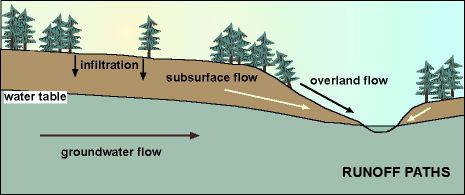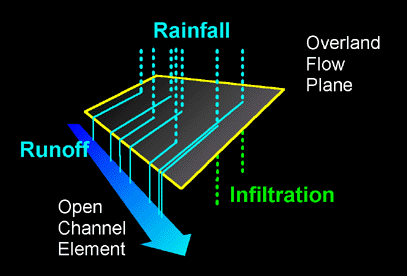
The Hydrologic Cycle is quite complex, with many moisture paths; however, in this project we are only concerned with a small portion of the entire cycle. In a simplified hydrologic model, rainfall (or snow/glacial melt) will pass through the watershed via overland flow, subsurface flow or groundwater flow.

Two important hydrologic properties of drainage basins that are affected by human development are the coefficient of runoff and concentration time.
The coefficient of runoff is the proportion of precipitation remaining after infiltration. This remaining amount of water will be available for surface or overland flow. In a simplified model, all rainfall reaching the surface will leave that point via infiltration or overland flow. The coefficient of runoff can also be considered as the amount of overland flow expressed as a percentage of total moisture input. Overland flow varies significantly with surface and subsurface conditions. It increases with greater slope and hardness of the ground cover; it decreases with increasing soil organic content, soil particle size and vegetative cover.


Concentration time is the amount of time required for runoff to travel from the perimeter of the watershed to the mouth. This also varies significantly with watershed sizes and conditions.